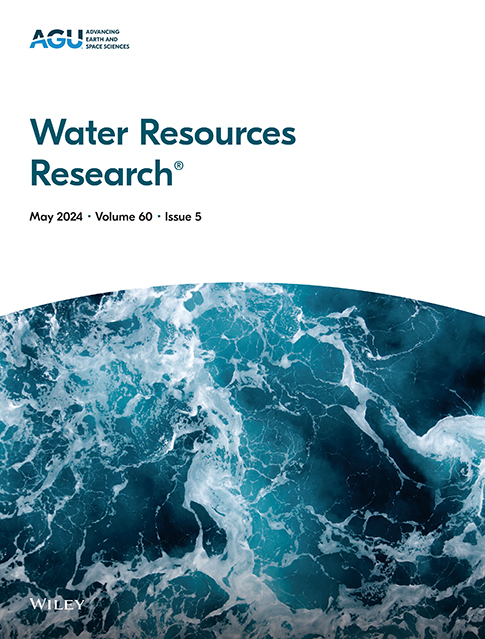The Influence of Horizontal Dispersion on Residence Times in Shallow Lakes
IF 4.6
1区 地球科学
Q2 ENVIRONMENTAL SCIENCES
引用次数: 0
Abstract
This study presents results of circulation and residence time in lakes influenced by wind-induced mixing investigated with numerical simulations. The study area is Lake Kasumigaura, a continuous lake system primally consisting of two lakes, West Lake and North Lake. Although metrological conditions and depths are similar for both lakes, the surface area and shape of the lakes are very different. A numerical model resolves the primary features of the wind-driven circulation in the lake system and is forced by observed river discharges and wind stress. A passive tracer released from the river mouths is used to estimate the residence time and evaluate mixing processes. Wind-driven flow dominates the kinetic energy in the lakes and induces chaotic motions leading to tracer dispersion which is largely influenced by the shape of the lakes. Results indicate that the residence time is much longer in the well-mixed middle basin of West Lake than North Lake. The estimated horizontal tracer diffusivity is approximately three times larger for the large West Lake than for the small-narrow North Lake. This study suggests that the surface area and shape of lakes in which the flow is predominantly wind driven largely influences circulation, water exchange processes and residence times in lakes.求助全文
约1分钟内获得全文
求助全文
来源期刊

Water Resources Research
环境科学-湖沼学
CiteScore
8.80
自引率
13.00%
发文量
599
审稿时长
3.5 months
期刊介绍:
Water Resources Research (WRR) is an interdisciplinary journal that focuses on hydrology and water resources. It publishes original research in the natural and social sciences of water. It emphasizes the role of water in the Earth system, including physical, chemical, biological, and ecological processes in water resources research and management, including social, policy, and public health implications. It encompasses observational, experimental, theoretical, analytical, numerical, and data-driven approaches that advance the science of water and its management. Submissions are evaluated for their novelty, accuracy, significance, and broader implications of the findings.
 求助内容:
求助内容: 应助结果提醒方式:
应助结果提醒方式:


